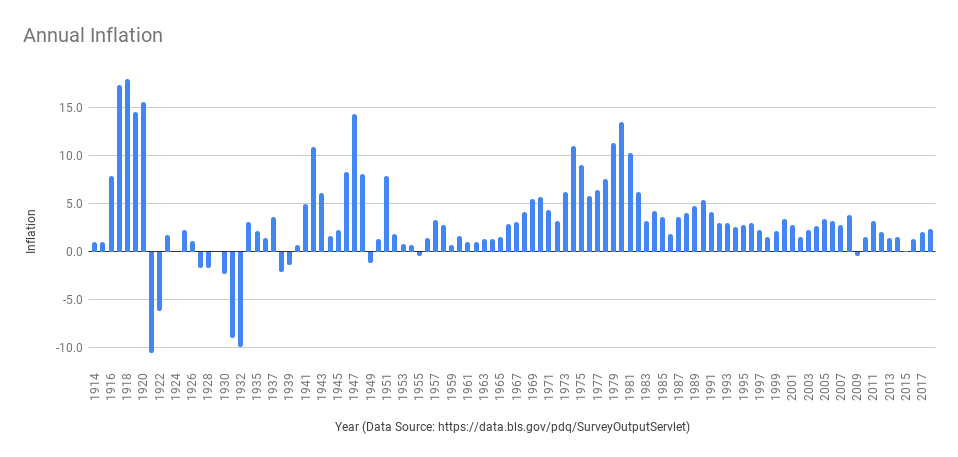Blinded by the Past
Most people wake up one morning, look at themselves in the mirror and say, “When did I gain all this weight?” Maybe the late-night snack or extra order of tacos (guilty as charged) become a regret. But it’s not something that happens overnight. People don’t see the impact of weight gain on a day-to-day basis. It’s only noticeable once the gain becomes large enough to make a difference and be painful.
People are typically unaware of rising costs on a day-to-day basis. Sure, a few items at the grocery store may be a little more expensive than they were a couple months ago, but it’s not large enough for people to realize the impact. It’s not causing pain. Lately, costs have been rising at a relatively slow pace. Recency bias is a flaw in all humans. This bias occurs when people recall and put a greater emphasis on recent events than they do past events. A mental baseline is created for what will happen in the future. It’s our nature; people have short-term memories. For example, as we continue to move further away from 2008–2009, investors frequently demonstrate recency bias in their portfolio decisions. The pain of the past becomes more faint. People forget the reality of market cycles. Investors assume the bull run will continue to ride upward by taking on more risk for greater returns because recency bias says so.
In 2016, 2017, and 2018 inflation has been 1.3%, 2.1%, and 2.4% respectively. In the past 20 years, average inflation hovered close to 2.2%. This moderate rise in costs is what people project into the future. Recency bias convinces people their expenses could never increase like it has in the past.

Looking back at all available data shows a more complete history of costs. As many remember, the 70’s saw inflation hit double-digit numbers. To many, this was a crushing blow with painful memories of recession, war, and oil shortages. The Fed has learned a lot since then, but to assume we may never face similar circumstances is dangerous thinking.
What about people who retired at the wrong time in history? People who retired in 1950 lived through an average annual increase of 2.4% over the next 20 years. Recency bias created a baseline of expectations for those in future years. But those who retired in 1970 saw an average annual increase of 6.3% in the cost of their goods. In dollar terms, retirees needed $3,394 in 1990 to buy the same amount $1,000 would buy in 1970.
I’ve found people are shocked when I show them how much their expenses are projected to be in the future. You may need $100,000 per year to live on in your first year of retirement, but to keep the same standard of living 20 years from now you will need $208,012*. Who knows what the next 20 years will actually hold for retirees. Most people only worry about returns on their investments, ignoring other aspects of their financial future. The best planning uses all available information to make tough decisions today in preparation for an unknown future.
*Assuming an average annual inflation rate of 3.73%
BLS CPI Data: https://data.bls.gov/pdq/SurveyOutputServlet
Talk with us about your portfolio or financial plan here: Talk with an advisor
More Reading: Can You Actually Time The Stock Market?
Alex Okugawa
San Diego Financial Planner. I write about financial planning topics to guide families in making a greater impact with their wealth.
1 Comment
Comments are closed.


[…] thing a retiree can do to prepare for low interest rates heading into and through retirement is have a plan and avoid putting all their eggs in one […]